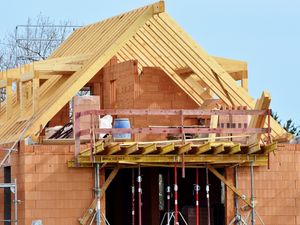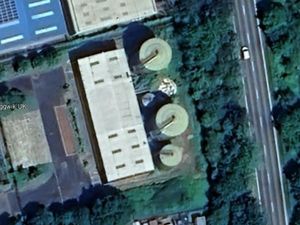Legal worries over major Lawley development approval
Future residents driving to and from newly-approved homes could be breaking the law if they cross a historic lane on their way, the parish council chairman has said.

Telford and Wrekin Council’s Planning Committee unanimously approved 600 houses and flats south of Station Road, Lawley Bank – “Phase 11” of the Lawley Village Developer Group’s decades-long 3,300-home project.
Lawley and Overdale Parish Council objected, and chairman John Yorke told the committee the plans involved three crossing points over Ladygrove, a restricted byway only immediate residents are supposed to drive on.
Developer representative Chris Wilson and committee legal advisor Ian Ross told members legal disputes over the ownership and entitlement to the lane, which cuts through the 55-acre site and forms part of its southeastern boundary, could not stand in the way of planning permission but would have to be resolved later.
Outline permission for the wider project, known as the Lawley Sustainable Urban Extension, was granted in 2005, and a planners’ report for the committee noted that “circa 2,700 dwellings have been built or are under construction” and a new primary school is finished and operational.
Phase 11, it said, consisted of 600 two- to five-bedroom homes, with Barratt Homes, Persimmon and Taylor Wimpey building around a third each.
Mr Wilson said: “The result will create an attractive, well-planned and safe residential environment.”
Restrictions
Councillor Yorke said Ladygrove was a restricted byway, enshrined in the rights-of-way map, meaning the general public are free to use it on foot or horseback but not in a motor vehicle. Only residents are allowed to drive on it and only then if their home has a single access point directly onto it, he said.
“This application shows three locations crossing Ladygrove to gain access to proposed homes on either side,” he said.
“These would fail the access test in that they do not each have access directly off the byway.”
Councillor Yorke added that the 1988 Road Traffic Act restricted vehicle use further than 15 yards from the byway.
“All estate users would commit an offence,” he said.
“Phase 11 will create some 1,500 traffic movements per day across Ladygrove,” Councillor Yorke added.
“The lane’s legal users, and dangerous conflicts thus created, have received little meaningful consideration.”
Mr Wilson said the LVDG had “responded positively to the matters and concerns and constraints given on this site” and “worked closely with officers over this very long project period”.
Contempt
Resident Carol Williams, who also spoke at the meeting to object to the proposal, said the latest round of consultation was due to expire at midnight on May 19, 10 hours after the start of the meeting.
She asked: “Is it legal to bring it to the committee at 2pm?”
She said further objections could be submitted before the expiry but after the committee’s decision, if the meeting were allowed to proceed.
Mr Ross pointed out that the planning officers’ recommendation stipulated that chairman Charles Smith and development service delivery manager Valerie Hulme to bring the proposal back to the committee if “significant material considerations” were raised.
In her presentation, Ms Williams told the committee: “For decades, Ladygrove residents have been under siege, forced to protect their families and defend their properties from a regime fuelled by profit and contempt for the ordinary person.
“Ladygrove is not and has never been an irrelevant potholed dirt lane. It holds significant historical relevance, originally a trodden grass path, it became a wooden rail track used for transporting minerals off Lawley Common to Coalbrookdale during the 18th century.
“Ladygrove is our home. We live here. We are proud to share our lane with indigenous and new communities, galvanised by centuries of shared poverty, grief, hope and prosperity.”





